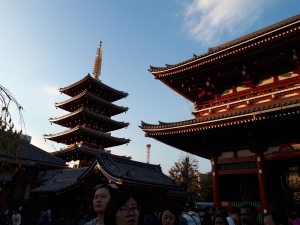“Can I tell you a story about the challenges of being a Christian in Japan?” asked the white-shirted young man, a graduate from a local university.
“Absolutely,” I answered from across the table laden with all manner of sushi fillings, including meats both cooked and raw.
How amazing of my host to have called this roomful of Christian students together tonight!
I’d been praying for a place to stay in Japan for weeks, never expecting God to set me up with someone who would throw an entire sushi party just so I could meet more Christian students. Now, a group of at least 15 young people sat gathered around my host’s low table, rolling sticky rice in seaweed while swapping stories about Christian life in Japan.
But I never expected to hear a story quite like this.
Christianity and Collectivism:
“The village where I’m from is Shinto oriented,” the young man began. “European villages have a church in the centre and houses around; we have a Shinto shrine in the centre and houses all around. The villagers don’t regard Shintoism as a religion, but as their culture.”
And Christianity represents the culture of foreigners, I remembered, thinking back to the history lesson I’d learned from a Japanese professor a few days earlier.
“I grew up as a Christian,” the graduate continued, “so I value putting God first, being a friend to those without friends and crying with those who cry. But in Japan, we are told from elementary school to form a ‘great circle,’ and to exclude those who don’t fit into it. So, I’d get excluded and bullied, not only by students but also by teachers.”

Collectivism.
I’d read about this in my cultural psychology textbook. Unlike individualistic Western cultures, which emphasize personal independence, collectivist cultures like Japan emphasize interpersonal relationships so much that your group defines your self.
If you grow up in a collectivist culture, you learn to define your identity by your community, your family and your circle of close friends. You need to do whatever it takes to protect that identity, please your ingroup, and avoid bringing shame to them. So, abandoning mainstream religion to follow Christ in a non-Christian collectivist society can often mean breaking ties with your culture, your community, your family—your very identity.
Even if your whole family follows Christ, swimming against the cultural current still entails a great deal of difficulty, as this graduate explained.
“Many elementary schools teach kids to start their meals in a Buddhist way,” he said, “by putting their hands together and saying, ‘I’m going to eat you, food that’s in front of me.’ It’s a way of thanking the souls of the food, based on animism.”

Animism, I recalled the definition from a world religions class: the belief that all things are alive, and possess a spirit.
Unable to participate in the animist ritual before meals, this student instead used to thank God for his food. When his teacher saw him pray before eating, she told him that the sight made her feel like throwing up, and that he should stop.
Lessons from a Hamster Death:
“When our class hamster died,” he continued, “the students wanted to do a Buddhist style funeral for it. Everyone was bowing to the dead hamster as part of the ritual, while I stood back, praying. I didn’t want to bow to a hamster. The teacher walked up and asked, ‘What are you doing?’ I answered that I was doing the funeral in my style, but she told me, “You should do it in our style. Do not bring your religious style to our classroom.”
And this is elementary school.
Never mind the challenges of being a Christian student at a non-Christian college. Christ-followers in non-Christian classrooms and cultures can face opposition at all stages of life.

“There were a lot of times I just wanted to quit being a Christian,” he confided, “to fall into the shape of the world and say, ‘He’s not my God.’ How many times I thought that would be easier! But while I didn’t have many peers at my church, the elders there were really supportive. They had been Christians since WWII and they knew how hard it was to follow Christ, but they also told me how blessed they were and what God did for them. They loved to tell the story of Elijah on Mount Carmel, standing for God among the Baal worshipers. Without that story and without those elders, I might have lost faith during my younger years.”
Mentorship again!
Here, the theme which had been surfacing over and over since my first conversations with students in Canada reappeared, as distinct as the taste of the seaweed I’d just been consuming:
Christian students need meaningful connections with older church members.
Older adults have stories to share, and we younger Christians need to hear them. Mature Christians’ testimonies, experience and commitment can ignite our faith, fuel our conviction, and launch our walk with Christ to the next level.
This side of mentorship doesn’t have to be complicated to be effective. It doesn’t need to feel formal, forced or frightening, and it certainly isn’t one-size fits all. Rather, it can be organic, flexible, and spontaneous – a series of little interactions where one generation declares God’s faithfulness to another.
Who knows?
Even the simplest story might just be a lifeline for someone’s faith.


That’s intense, for elementary school especially! So glad those elders provided encouragement and support for him.
LikeLike
Agreed. And the elementary school experience certainly left a lasting impression, all these years later. Just goes to show the importance of supportive families and churches, and of equipping students with biblical foundations at all age levels.
LikeLike